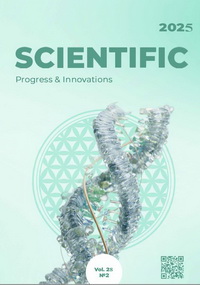Algorithm for conducting a comprehensive forensic veterinary examination with the study of potential and toxic substances for isoniazid poisoning in animals
DOI:
https://doi.org/10.31210/spi2025.28.02.36Keywords:
forensic veterinary examination, dogs, animal cruelty, poisoning, isoniazidAbstract
In recent decades, there has been a significant increase in the number of stray animals. The main reason for this is the irresponsible attitude of people, which leads to uncontrolled reproduction of animals, the appearance of unwanted offspring on the streets. The lack of sterilization of animals that do not have breed value and are not used for breeding worsens the situation. Cases of poisoning of domestic animals with isoniazid have become more frequent, when they accidentally consume poisoned food or bait containing poison. Intentional poisoning of both stray and domestic animals is recorded. Although the current legislation of Ukraine provides for liability for cruelty to animals (Article 89 of the Code of Ukraine on Administrative Offenses and Article 299 of the Criminal Code), the number of such cases remains high. This is due to the lack of clear, civilized mechanisms for solving the problem. The regulation of the number of stray dogs, which is mainly carried out by municipal enterprises through the creation of shelters and detention centers, does not give the desired results. Unfortunately, the problem remains acute, and its solution is often controlled by unauthorized methods. Among such methods, the use of poisonous baits is widespread, in particular isoniazid (tubazid) - isonicotinic acid hydrazide. This drug, which is usually used in medicine to treat tuberculosis, is included in the list of the ten most dangerous drugs for dogs, determined by the American Society for the Prevention of Cruelty to Animals. Isoniazid is especially toxic to dogs due to the absence in their body of the enzyme N-acetyltransferase, necessary for metabolic transformations. Once in the dog's body, the drug is quickly absorbed into the blood, causing irreversible disorders and serious health consequences.
Downloads
Published
How to Cite
Issue
Section
License
Copyright (c) 2025 Scientific Progress & Innovations

This work is licensed under a Creative Commons Attribution 4.0 International License.

 Creative Commons Attribution 4.0 International Licens
Creative Commons Attribution 4.0 International Licens